Workplace discrimination is a pervasive issue that can have severe consequences for both employees and employers. It not only affects the victims’ mental and emotional well-being but also undermines the integrity and productivity of the workplace as a whole. Employment lawyers understand the complexities of workplace discrimination and the importance of addressing it effectively. This comprehensive guide will walk you through recognizing and handling workplace discrimination, empowering you to protect your rights and take appropriate action.

Recognizing Workplace Discrimination
Before taking action, it is crucial to recognize the signs of workplace discrimination. Discrimination can take many forms and may not always be overt. Here are the steps to help you identify whether you are experiencing discrimination in your workplace:
1. Understand What Constitutes Discrimination
The U.S. Equal Employment Opportunity Commission describes employment discrimination as when an individual is mistreated or treated less favorably at work due to their race, color, religion, sex (including pregnancy, gender identity, and sexual orientation), national origin, disability, age (40 or older), or genetic information, and includes:
- Hiring and Firing: Being denied or terminated based on a protected characteristic.
- Promotion and Advancement: Being passed over for promotions or opportunities for advancement due to discrimination.
- Compensation: Receiving unequal pay or benefits compared to others in similar positions.
- Work Assignments: Being assigned undesirable tasks or excluded from essential projects based on discriminatory reasons.
- Harassment: Enduring verbal, physical, or psychological abuse related to a protected characteristic.
- Retaliation: Facing adverse actions, such as demotion or termination, after reporting discrimination or participating in an investigation.
2. Document Incidents of Discrimination
If you suspect you are being discriminated against, start documenting all incidents as they occur. Include the following details:
- Dates and Times: Record each discriminatory incident’s date, time, and location.
- People Involved: Note the names of individuals involved, including witnesses.
- Description of Events: Write a detailed description of what happened, including discriminatory remarks or actions.
- Relevant Evidence: Collect any supporting evidence, such as emails, text messages, or performance evaluations, to help substantiate your claim.
3. Identify Patterns of Discrimination
Discrimination often occurs as part of a pattern rather than a single incident. Look for recurring behaviors or actions that suggest you are treated differently because of a protected characteristic. Patterns of discrimination might include repeated exclusion from meetings, consistently receiving less favorable assignments, or experiencing ongoing hostile behavior.
Handling Workplace Discrimination: A Step-by-Step Approach
Once you have identified workplace discrimination, it is essential to take action to address it. Here is a step-by-step guide on how to handle workplace discrimination effectively:
1. Review Your Company’s Anti-Discrimination Policy
Most companies have an anti-discrimination policy outlining the reporting and addressing procedures for discrimination. Familiarize yourself with this policy to understand the steps your employer is expected to take in response to a complaint. This policy should be part of the employee handbook or accessible through your company’s internal resources.
2. Report the Discrimination Internally
Report the discrimination to your immediate supervisor, HR department, or another designated company representative. Follow your company’s reporting procedures, and provide the documentation you have gathered to support your claim. Be clear and concise when explaining the nature of the discrimination and how it has affected your work environment.
- Supervisor or Manager: If comfortable, report the discrimination to your supervisor. If the supervisor is the source of the discrimination, report it directly to HR.
- HR Department: If your supervisor cannot resolve the issue or if the supervisor is the source of the discrimination, escalate the matter to your HR department. HR is responsible for investigating discrimination complaints and ensuring compliance with company policies and federal law.
- Internal Reporting Systems: Some companies have anonymous reporting systems or hotlines. If you fear retaliation, consider using these options.
3. Follow Up on Your Complaint
After filing a complaint, it is essential to follow up to ensure that the issue is taken seriously and investigated thoroughly. Request a timeline for the investigation and ask to be informed of any developments. Keep records of all communications related to your complaint.
4. Know Your Rights Under Federal and State Law
Federal laws such as Title VII of the Civil Rights Act of 1964, the Americans with Disabilities Act (ADA), and the Age Discrimination in Employment Act (ADEA) protect employees from discrimination. State and local laws may provide additional protections. Understanding your rights under these laws is empowering, as it gives you the confidence to recognize and address discrimination in your workplace.
- Title VII of the Civil Rights Act of 1964: Prohibits discrimination based on race, color, religion, sex, or national origin.
- Americans with Disabilities Act (ADA): Prohibits discrimination against individuals with disabilities and requires reasonable accommodations.
- The Age Discrimination in Employment Act (ADEA): Protects employees 40 years or older from age-based discrimination.
5. File a Charge with the Equal Employment Opportunity Commission (EEOC)
If your internal complaint does not resolve the issue or you experience retaliation, you may need to file a charge with the Equal Employment Opportunity Commission (EEOC). The EEOC is the federal agency responsible for enforcing anti-discrimination laws.
- Filing a Charge: You must file a charge with the EEOC before filing a lawsuit against your employer. This charge must be filed within 180 days of the discriminatory incident, though this deadline may be extended to 300 days in some instances.
- EEOC Investigation: Once you file a charge, the EEOC will investigate your claim. This may involve interviewing witnesses, reviewing documents, and negotiating with your employer.
- Mediation: The EEOC may offer mediation as an alternative to the investigation, allowing both parties to resolve the issue without litigation.
- Right to Sue: If the EEOC finds evidence of discrimination but cannot resolve the matter, it will issue a “right to sue” letter, allowing you to file a lawsuit in federal court.
6. Seek Legal Counsel
Handling workplace discrimination can be complex and emotionally challenging. Consulting with an experienced employment attorney can provide valuable guidance and support. An attorney can:
- Evaluate Your Case: Assess the strength of your discrimination claim and advise you on the best course of action.
- Represent You: Advocate on your behalf during internal investigations, EEOC proceedings, or in court.
- Negotiate Settlements: Work to secure a fair settlement that compensates you for damages such as lost wages, emotional distress, and legal fees.
7. Consider Filing a Lawsuit
If internal reporting and filing a charge with the EEOC do not resolve the issue, you may consider filing a lawsuit against your employer. A lawsuit can compensate you for damages and hold your employer accountable for discriminatory practices.
- Legal Process: Filing a lawsuit involves submitting a complaint to the court, engaging in discovery (the exchange of evidence), and potentially going to trial.
- Potential Outcomes: Successful lawsuits can result in monetary compensation, reinstatement to your position, or changes in company policies to prevent future discrimination.
Conclusion: Empower Yourself to Fight Discrimination
Workplace discrimination is a serious issue that requires a proactive and informed approach. By recognizing the signs of discrimination, documenting incidents, and following the appropriate steps, you can protect your rights and hold your employer accountable. Remember that you are not alone—employment lawyers are here to help you navigate this challenging process and ensure justice is served.
If you believe you are experiencing workplace discrimination, take action today. Consult an experienced employment attorney who can provide you with the guidance and support you need to handle the situation effectively and protect your rights.
FAQ’s
- What constitutes workplace discrimination?
Workplace discrimination occurs when an employee is treated unfairly or unequally based on protected characteristics, such as race, color, religion, sex, national origin, age, disability, or genetic information. Discrimination can manifest in various ways, including unfair hiring practices, wrongful termination, unequal pay, harassment, and retaliation for reporting discriminatory behavior.
- What should I do if I suspect I am being discriminated against at work?
If you suspect workplace discrimination, begin by documenting all incidents, including dates, times, people involved, and descriptions of events. Review your company’s anti-discrimination policy, report the discrimination internally to your supervisor or HR department, and keep detailed records of all communications regarding your complaint.
- What are my rights under federal law if I face discrimination at work?
Federal laws such as Title VII of the Civil Rights Act of 1964, the Americans with Disabilities Act (ADA), and the Age Discrimination in Employment Act (ADEA) protect employees from discrimination based on race, color, religion, sex, national origin, age, and disability. These laws ensure that employees are treated fairly and can seek legal recourse if they experience discrimination.
- When should I file a charge with the Equal Employment Opportunity Commission (EEOC)?
If your internal complaint with your employer does not resolve the issue, or if you experience retaliation, you may need to file a charge with the EEOC. This must be done within 180 days of the discriminatory incident, though the deadline may extend to 300 days in some cases. The EEOC will investigate the claim and may offer mediation or issue a “right to sue” letter.
- How can an employment attorney help me with a workplace discrimination case?
An experienced employment attorney can provide valuable guidance by evaluating the strength of your discrimination claim, representing you during internal investigations or legal proceedings, negotiating settlements, and helping you navigate the complexities of filing a lawsuit. An attorney can ensure your rights are protected and you receive fair compensation for any damages suffered.

